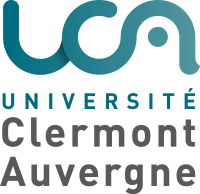LSST/ZTF
The LPCA cosmology group is involved in the development and analysis of two astronomical surveys: the Legacy Survey of Space and Time (LSST) and the Zwicky Transient Facility (ZTF). Type Ia supernovae, highly luminous transient objects resulting from the explosion of a star at the end of its life, are the main focus of the group’s studies.
Type Ia supernovae
Type Ia Supernovae (SNe Ia) are highly luminous transient objects resulting from the thermonuclear explosion of a white dwarf. The light curves of SNe Ia (flux measured as a function of time) show similar characteristics, with peak luminosity appearing a fortnight after the explosion, and a decay that can last several months. SNe Ia are therefore cosmological probes with intrinsic self-similar luminosities, and are considered to be standardizable candles. The parameters of SNe Ia, estimated from the light curves, enable us to measure distances and deduce dark energy properties by measuring the cosmological parameters of the equation of state.
LSST
LSST is a large-scale astronomical survey (over 20,000 deg2) to be carried out from the Vera Rubin Observatory (VRO) located in northern Chile on Cerro Pachon (2,680 m). Starting in 2025, the VRO will systematically observe the sky over a ten-year period, producing the largest astronomical catalog ever made (83 pB), with 17 billion stars and 20 billion galaxies. LSST will also collect a very large number of type Ia supernovae (SNe Ia) (over 900,000 after ten years), a large fraction of which (over 220,000) can be used to measure cosmological parameters (equation of state for dark energy) with great precision.
LSST will be carried out with the largest astronomical camera (LSSTcam) ever built. This instrument boasts impressive features, with a size of 1.65x3m (the size of a small car) and a mass of 2.8T. Using a 64cm-diameter focal plane containing 3.2 billion pixels, LSSTcam will take images every 34s in 6 optical filters for 10 years, corresponding to around 825 snapshots (a rate of about 3 days) for each observable point in the sky.
Rubin Observatory/LSST currently has 8 active scientific collaborations. The LPCA team is heavily involved in the largest of these collaborations (1619 members in November 2024), the Dark Energy Science Collaboration (DESC), dedicated to cosmological measurements.
LSST activity in LPCA began in 2013 via three research axes: the construction of a test bench for the LSSTcam filter changer (end 2020); a contribution to the development, deployment and configuration of the LSST database, Qserv (end 2023); participation in a data challenge in 2013, the success of which contributed to the establishment of a partnership between IN2P3 and American associate (LSSTCorporation, LSSTPO, NCSA).
Since 2015 the lab’s group has made a major contribution to the study of LSST’s observing strategy using SNe Ia, proposing innovative strategies to improve the number and quality of LSST’s SNe Ia (which should lead to more accurate cosmological measurements).
Other significant results were obtained in the group: participation in a realistic data challenge (six optical bands over 300 deg2); involvement in calibration studies (starDICE, AuxTel); study of the synergy between DESC and LSST.

ZTF
ZTF is a survey carried out by the ZTF collaboration from a 1.2 m telescope (built in 1948) located at Mount Palomar in California. With a 1.8 m mirror, this Schmidt telescope, managed by the Caltech institute, has been equipped since 2018 with a 600 megapixel astronomical camera, and is equipped with three optical filters (g, r, i).
Its large field of view (47 deg2) enables it, with exposures of 30s, to scan the entire observable sky in a single night. The photometric survey is completed by measurements taken with a spectrograph, enabling spectroscopic classification of any transient object observed.
Since the start of the survey, around 8,000 SNe Ia (z<0.15) have been observed and spectroscopically identified. This sample corresponds to around 10 times the number of SNe Ia used for cosmological measurements (compilation of 12 low-redshift surveys). The ZTF sample is not subject to inter-calibration problems, and represents an important batch for anchoring the Hubble diagram fit to measure the parameters of the dark energy equation of state. In addition, the ZTF survey observes around 3/4 of the observable sky, making it possible to study the expansion rate of structure formation and potential anisotropies in the cosmic expansion rate.
The LPCA group joined the ZTF collaboration in 2018 and participated in the extraction of SNe Ia spectra as well as calibration-related issues. The 2% photometric accuracy achieved by the ZTF pipeline does not appear to be sufficient for cosmological measurements. The group is contributing to the photometric calibration effort within the framework of an ANR (with the Paris, Marseille and Lyon laboratories) aiming to achieve calibration to the thousandth. As part of this work, realistic simulations have been proposed and a study associating SNe Ia and cosmic voids has been developed. The group’s current thesis focuses on the study of potential anisotropies of the Hubble parameter H0.
Composition of the group
The group currently consists of 6 permanent members and two non-permanent members.
– Marie Aubert (post-doctoral fellow, ZTF/Euclid)
– Chloé Barjou-Delayre (PhD student, ZTF)
– Johann Cohen-Tanugi (DR (research director), LSST)
– Philippe Gris (DR (research director), LSST) – group leader (philippe.gris@clermont.in2p3.fr)
– Nicoleta Pauna (McF (lecturer), LSST)
– Corentin Ravoux (CR (research officer), LSST/DESI)
– Philippe Rosnet (Pr (University Professor), ZTF)
– Louis-Pierre Says (McF (lecturer), LSST)




